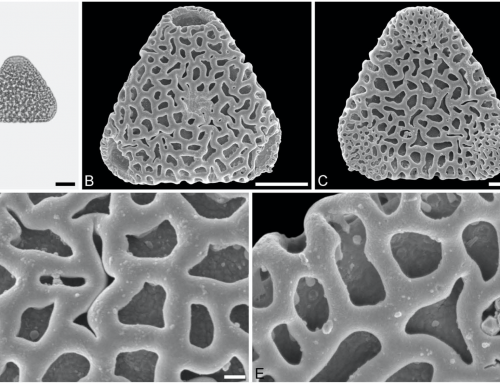Authors: Friðgeir Grímsson, Thomas Denk, Leifur A. Símonarson
Two macrofloras, 15 and 13.5 Ma old, are described from the oldest exposed plant bearing sediments on Iceland. Many of the taxa are mentioned for the first time and a lime tree, Tilia selardalense, is described as a new species. In case of the older flora, differences in the environment are reflected in plants derived from volcanic sediments from high elevations (Selárdalur, 15 Ma) and from lowland alluvial plains (Botn, 15 Ma). The former are characterized by zonal elements and dominated by Fagus. The latter is dominated by conifers inhabiting swamps and hummocks. The younger Ketilseyri flora (13.5 Ma) is poorer and more similar to the Selárdalur flora. Both floras suggest a humid warm temperate climate (mostly Cfa climate sensu Köppen) with a number of exotic elements (Glyptostrobus, Sequoia, Magnolia, Cercidiphyllum). Evaluating the dispersal mechanisms of all the taxa shows that at least some (Aesculus, Fagus) could not have possibly colonized Iceland crossing large ocean barriers. Furthermore, most anemochorous taxa recorded have a very limited dispersal radius. This suggests that when “proto-Iceland” was colonized, it was connected to the mainland or accessible via a chain of islands. This land could have been part of the Greenland–Scotland Transverse Ridge that is believed to have persisted from the early Cenozoic to Late Oligocene and partly into the Middle Miocene.




